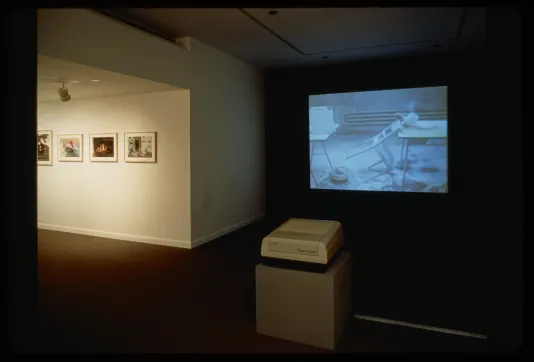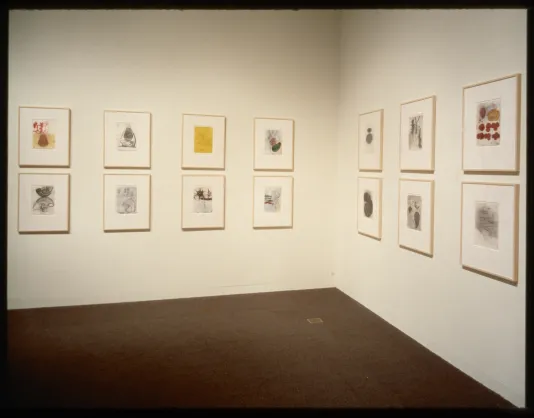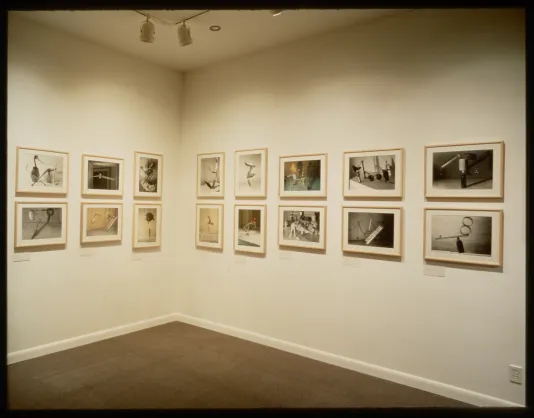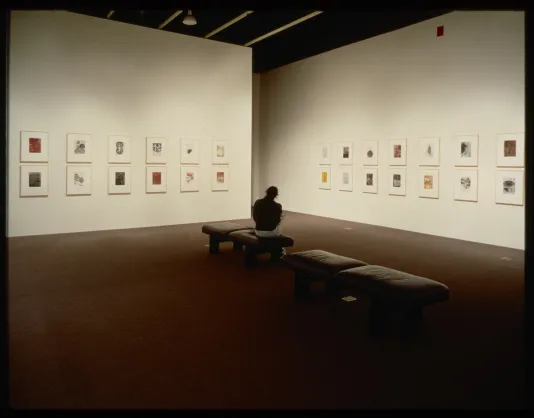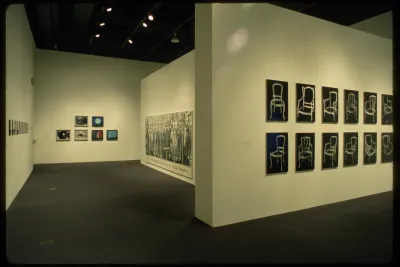Installation view, Peter Fischli and David Weiss, MIT List Visual Arts Center, 1987.
Peter Fischli and David Weiss
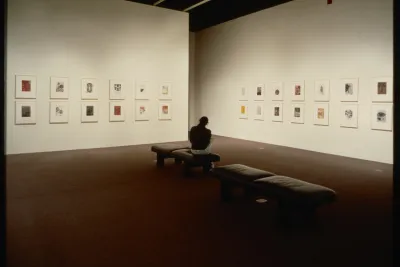
Peter Fischli and David Weiss are an artist-team based in Zurich, Switzerland, where they have been working collaboratively since 1979. Throughout their work, which has involved photography, sculpture, drawing, and film, they have played with the unexpected aspects of the mundane.
This exhibition includes two bodies of photographs: the Wurst Series (1979) and the Equilibrium or Quiet Afternoon group (1984-1985). In the Wurst Series, the artists subvert conventions of normalcy, by using deliberately crude theatricals involving a cast of characters that range from cold cuts to cigarette butts. This use of everyday material such as kitchen utensils, furniture, and vegetables continues in the Equilibrium photographs. In these images the benign and comic narratives depicted in the sausage scenes give way to more disquieting situations. Here, not only is our notion of normalcy challenged, but also our ideas and understandings of logic, gravity, and fate.
Another piece in the exhibition is a film entitled The Way Things Go. This piece continues the motif of an earlier film by the collaborative team in which a rat and a bear (the artists in costume) embark on an extended series of adventures seeking order and meaning in the world. In the new film, the artists exploit the tension between deliberately calculated set-ups and the awe-inspiring autonomy of the subsequent chain of events which they unleash. The sequence is both comic and melancholic in its mute obedience to laws that challenge human governance.
The exhibition has received support from the Swiss Council for the Arts PRO HELVETIA. After its showing at MIT the exhibition will travel to museums in Chicago, New York, and Los Angeles. A 28-page illustrated catalogue, the first English language publication on the artists, was also created along with the exhibition.
